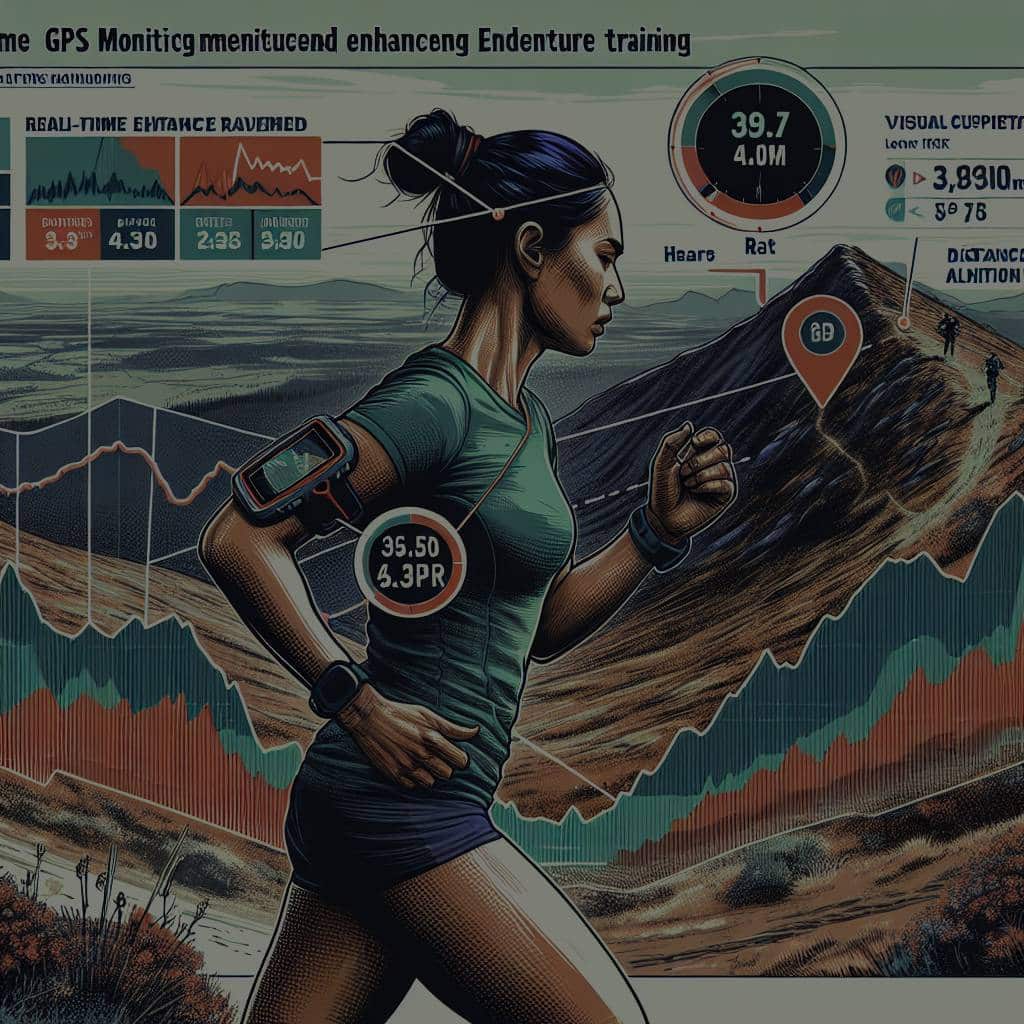In the thrilling world of adventure racing, every second counts. The difference between victory and defeat often hinges on the ability to monitor and optimize one’s performance. One of the most useful tools in an adventure racer’s arsenal is a real-time GPS tracking device. But how exactly does this technology enhance training and performance? Let’s delve into this topic and explore the intersection of sports, technology, and endurance training.
Harnessing the Power of Real-Time Data
Real-time data is the bread and butter of modern athletic training. With the advent of sophisticated GPS tracking technologies, athletes can now monitor their performance in real time. This ability to capture and analyze performance metrics as they happen is changing the face of endurance training.
This might interest you : What Are the Special Considerations for Designing Sports Gear for Paralympic Sprinters?
A GPS watch, for example, can track the speed, distance, and route of a run. It can monitor an athlete’s heart rate, provide insight into their training intensity, and even help them plan routes for future training sessions. This wealth of data is invaluable to athletes who are aiming to optimize their performance.
In the case of adventure racers, real-time GPS tracking provides a way to monitor and manage their pace during a race. It can help athletes understand how their body responds to different race situations and terrain types. This level of insight can be instrumental in shaping more effective training plans and race strategies.
Also to read : How to Implement Video Analysis in Referee Training for Better Decision Making in Football?
GPS Tracking and Heart Rate Monitoring
Heart rate monitoring is a crucial aspect of endurance training. Tracking an athlete’s heart rate can provide insight into their cardiovascular fitness, their endurance levels, and their body’s response to varying intensities of exercise.
By combining heart rate data with GPS tracking, athletes can gain a deeper understanding of their performance. For instance, an athlete can see how their heart rate fluctuates over the course of a run, how it correlates with their pace, and how it responds to different terrains. This rich dataset can help athletes fine-tune their training and push their limits safely.
Additionally, some GPS watches come with heart rate zone training features. This allows athletes to set specific heart rate zones for their training sessions. When the heart rate enters a specific zone, the watch alerts the athlete. This is a powerful tool for controlling training intensity and preventing overtraining.
The Role of GPS in Route Planning and Terrain Training
Route planning is another area where GPS tracking can play a pivotal role. Adventure racing often involves navigating through challenging terrains and weather conditions. By using the GPS data from past training sessions or races, athletes can plan their routes more effectively.
Moreover, training on different types of terrain is an essential part of endurance training for adventure racers. Real-time GPS tracking can help athletes analyze their performance on various terrains. They can identify areas where they struggle and focus their training on those aspects.
For instance, an athlete may find that they slow significantly when running uphill. With this information, they can incorporate more hill runs into their training. Similarly, they might discover that they lose time when navigating through dense forests. In response, they might spend more time training in similar environments to improve their skills.
The Future of GPS Monitoring in Adventure Racing
The future is bright for real-time GPS monitoring in adventure racing. As technology continues to advance, we can expect to see even more sophisticated and precise tracking devices. These will offer deeper insights into performance metrics, allowing athletes to optimize their training and performance even further.
Already, some GPS watches offer features like real-time 3D mapping, advanced altitude tracking, and even guidance for optimal recovery periods. As these technologies continue to evolve, athletes will gain access to ever more powerful training tools.
The potential benefits of these advancements are enormous. More precise tracking can lead to more effective training, improved performance, and, ultimately, more exciting and competitive races. So, whether you’re an adventure racer looking to gain an edge or a sports enthusiast fascinated by the intersection of technology and training, the future of real-time GPS monitoring is something to watch with anticipation.
Optimizing Battery Life and Durability in GPS Devices
Adventure racers often find themselves in the most demanding of environments. Whether it’s the extreme cold of a high-altitude mountain race, the stifling heat of a desert marathon, or the relentless pounding of a multi-day, long-distance event, the durability of the equipment is non-negotiable. The endurance of the athlete’s GPS device is just as vital as the endurance of the athlete themselves.
GPS devices, particularly those designed for adventure racing, are built with this in mind. They tend to have a high level of resistance to shock, dust, water, and extreme temperatures. However, one of the most crucial aspects of a GPS device’s resilience is its battery life. An adventure racer’s GPS must last throughout their training sessions and, most importantly, on race day itself.
This is where modern GPS watches, like the Apple Watch, really shine. They are designed with efficient power management systems that optimize the use of battery life. These devices often provide an option to activate a battery-saving mode, which minimizes power consumption by disabling non-essential features. This ensures that the GPS and heart rate monitor functions, vital for high-intensity training and racing, continue to function even in long-duration events.
Moreover, many GPS watches provide real-time data not only on the athlete’s performance but also on the device’s battery status. This allows athletes to manage their device usage effectively, ensuring that they do not run out of battery mid-race or training session.
Using GPS Features in Adventure Race Organization
Beyond individual training and performance, real-time GPS monitoring has significant implications for the organization of adventure races. Race organizers can use GPS data to monitor the progress of the race, ensure fair competition, and even guarantee the safety of participants.
For example, race organizers can use GPS tracking to monitor the real-time positions of all competitors. This allows for immediate identification of any racer straying off course or taking prohibited shortcuts. Similarly, in the event of a medical emergency or a racer getting lost, the monitoring system can swiftly locate the athlete, ensuring a quick response.
In addition, real-time GPS data can enrich the spectators’ experience. Whether it’s through a race-day mobile app or a live broadcast, fans can follow their favorite athletes’ progress, check their speed, distance covered, and even their heart rate. This level of detail brings an entirely new dimension to watching adventure racing, making it a more immersive and engaging experience.
In conclusion, real-time GPS monitoring has revolutionized endurance training for adventure racers. Its ability to capture a wealth of real-time data, such as heart rate, speed, distance, and location, enables athletes to optimize their training and performance in a way that was not possible before. The durability and battery life of these devices ensure their reliability even in the harshest conditions. Furthermore, GPS technology enriches the experience of race organizers and spectators, making adventure racing more accessible and exciting than ever before. As GPS technology continues to evolve and improve, its role in adventure racing is set to become even more integral. We are undoubtedly on the cusp of some truly exciting developments in the world of adventure racing. Adventure racers and sports enthusiasts alike should continue reading and exploring this fascinating intersection of sports and technology.






